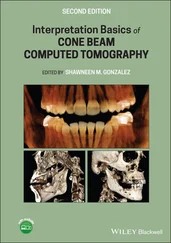13 Chapter 13Figure 13.1 A simple photoconductor consists of a semiconductor with two con...Figure 13.2 Radiation shining on a reversed‐biased diode creates an electron...Figure 13.3 The PIN diode structure consist of a p‐ and an n‐region separate...Figure 13.4 Both MASERs and LASERs work with the idea that electrons that ar...Figure 13.5 In a coherent light (left) all the waves A, B, and C are exactly...Figure 13.6 The beam of light bounces inside the cavity with one fully refle...Figure 13.7 A ruby LASER in a reflective cavity surrounded by a light coil t...Figure 13.8 The internal voltage for a degenerate semiconductor diode is lar...Figure 13.9 On the left we have a highly doped pn‐junction. When we forward ...Figure 13.10 In a LASER semiconductor, the reflective properties of the tran...Figure 13.11 Some methods to confine the beam inside the semiconductor cavit...Figure 13.12 Typical system for LASER scanning.Figure 13.13 The spontaneous recombination of electrons and holes at the jun...Figure 13.14 A typical detector readout array with as many inputs as detecto...
14 Chapter 14Figure 14.1 Basic components and interconnections of a modern computer.Figure 14.2 Memories in a typical laptop. The closer the memories are to the...Figure 14.3 Symbol for the ALU.Figure 14.4 The CPU processes an operation sequentially and when it finishes...Figure 14.5 The main components of an LCD. The liquid crystal is in the midd...Figure 14.6 Molecule of a liquid crystal consisting of two hexagonal benzene...Figure 14.7 The three phases of a liquid crystal: solid at 0 °C, liquid crys...Figure 14.8 The liquid crystal molecules align themselves with the two conta...Figure 14.9 A partial matrix of CMOS switches that turn ON and OFF each of t...Figure 14.10 A partial array showing, not to scale, the portions of the poly...Figure 14.11 Top: a pair of polarizers, A and B. Both are polarized in the s...Figure 14.12 The transistor of the red pixel is OFF, scattering the light in...
15 Chapter 15Figure 15.1 Analogue computer at Northwestern University in the 1960s with D...Figure 15.2 Dr. Gordon Moore, past CEO of Intel, most famous for Moore’s law...Figure 15.3 The number of transistors in a millimeter square space as a func...Figure 15.4 The growth of the number of transistors in an integrated chip be...Figure 15.5 Processor growth in the last 40 yearsFigure 15.6 A FET and some designs rules that are needed to ensure that key ...Figure 15.7 Sketch of an optical projection system (left) and the resulting ...Figure 15.8 Crystallographic structures of carbon in the graphite state (A a...Figure 15.9 An IBM quantum computer.Figure 15.10 An n‐MOS and p‐MOS fabricated on top of an insulating substrate...Figure 15.11 In a vertical integration process we deposit more than one laye...Figure 15.12 An example of multiple metallic layer interconnects.Figure 15.13 Sketch of a FinFET. The semiconductor is a very thin vertical s...Figure 15.14 The tunnel FET and energy bands when the TFET is reversed biase...
1 Cover
2 Table of Contents
3 Begin Reading
1 iii
2 iv
3 v
4 xiii
5 xv
6 xvi
7 1
8 2
9 3
10 4
11 5
12 6
13 7
14 8
15 9
16 10
17 11
18 12
19 13
20 14
21 15
22 16
23 17
24 19
25 20
26 21
27 22
28 23
29 24
30 25
31 26
32 27
33 28
34 29
35 30
36 31
37 32
38 33
39 35
40 36
41 37
42 38
43 39
44 40
45 41
46 42
47 43
48 44
49 45
50 46
51 47
52 48
53 49
54 50
55 51
56 52
57 53
58 54
59 55
60 56
61 57
62 58
63 59
64 60
65 61
66 62
67 63
68 64
69 65
70 66
71 67
72 68
73 69
74 70
75 71
76 72
77 73
78 74
79 75
80 76
81 77
82 78
83 79
84 80
85 81
86 82
87 83
88 84
89 85
90 86
91 87
92 89
93 90
94 91
95 92
96 93
97 94
98 95
99 96
100 97
101 98
102 99
103 100
104 101
105 102
106 103
107 104
108 105
109 106
110 107
111 108
112 109
113 110
114 111
115 112
116 113
117 114
118 115
119 116
120 117
121 118
122 119
123 120
124 121
125 122
126 123
127 124
128 125
129 126
130 127
131 128
132 129
133 130
134 131
135 132
136 133
137 134
138 135
139 136
140 137
141 138
142 139
143 140
144 141
145 142
146 143
147 144
148 145
149 146
150 147
151 148
152 149
153 150
154 151
155 152
156 153
157 154
158 155
159 156
160 157
161 159
162 160
163 161
164 162
165 163
166 164
167 165
168 166
169 167
170 168
171 169
172 170
173 171
174 172
175 173
176 174
177 175
178 176
179 177
180 178
181 179
182 180
183 181
184 182
185 183
186 184
187 185
188 187
189 188
190 189
191 190
192 191
193 192
194 193
195 194
196 195
197 196
198 197
199 198
200 199
201 200
202 201
203 202
204 203
205 204
206 205
207 206
208 207
209 208
210 209
211 210
212 211
213 212
214 213
215 214
216 215
217 216
218 217
219 218
220 219
221 220
222 221
223 222
224 223
225 224
226 225
227 226
228 227
229 228
230 229
231 230
232 231
233 232
234 233
235 234
236 235
237 236
238 237
239 238
240 239
241 240
242 241
243 243
244 244
245 245
246 246
247 247
248 248
249 249
250 250
251 251
252 252
253 253
254 254
255 255
256 256
257 257
258 258
259 259
260 260
261 261
262 262
263 263
264 264
265 265
266 266
267 267
268 268
269 269
270 270
271 271
272 272
273 273
274 275
275 276
276 277
277 279
278 280
279 281
280 282
281 283
282 284
283 285
284 286
285 287
286 289
287 290
288 291
289 292
290 293
291 294
292 295
293 296
294 297
295 298
Semiconductor Basics
A Qualitative, Non‐mathematical Explanation of How Semiconductors Work and How They Are Used
George Domingo
Berkeley
CA, USA

This edition first published 2020
© 2020 John Wiley & Sons Ltd.
All rights reserved. No part of this publication may be reproduced, stored in a retrieval system, or transmitted, in any form or by any means, electronic, mechanical, photocopying, recording or otherwise, except as permitted by law. Advice on how to obtain permission to reuse material from this title is available at http://www.wiley.com/go/permissions.
The right of George Domingo to be identified as the author of this work has been asserted in accordance with law.
Читать дальше












